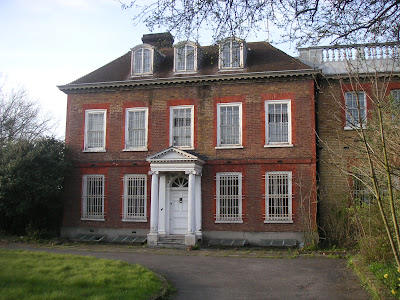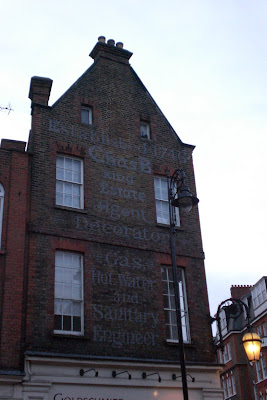
One of the most frequent asks is ‘where does the street name come from’ and for north west London the link with Kent and Africa is perhaps a little obscure.
In simple terms here are four of the ‘connections’:
http://en.wikipedia.org/wiki/Asmarahttp://en.wikipedia.org/wiki/Menelek_II_of_Ethiopiahttp://en.wikipedia.org/wiki/Somali_Regionhttp://en.wikipedia.org/wiki/Skardu
The Powell- Cotton family owned vast tracts of the land along the Edgware Road (now Kilburn High Road) and gradually started the process of cashing in on their land as demand for housing development grew.
Most of the places were named after the Powell-Cotton links in Kent and their own estate of Quex Park or places in Africa and India that Major Percy Horace Gordon Powell-Cotton (1866-1940) visited (pic. left).
The Major made over 28 expeditions to Africa and his records, collections and trophies, now much frowned upon as a sport, are being used as an amazing anthropological resource for conservation and wildlife charities.
Menelik was a personal choice after he had an audience with the then famous Ethiopian Emperor Menelik II (pic. below left).
The speed of the local developments in West Hampstead/Cricklewood/Kilburn development was pretty intense and this is the source of many of the street names.

You really get a sense of the scale of building that was happening and also the money that would have changed hands (presumably giving the Powell-Cotton family significant income at a time when there was a lot of spending on the world travel!
The chronology works something like this (I have plundered a host of sources here!):
1855 plans for Shoot-Up-Hill were drawn up but then deferred for greater clarity on what was planned for the new railway lines.
1866 plans approved for the Liddell estate of Quex Road, Birchington Road and Mutrix Road.
1890s plans were approved for north of Mill Lane
- Fordwych Road by 1892 and houses built between 1892 and 1907.
- Minster Road between 1891 and 1900
- Gondar Gardens between 1892 and 1896, with the flats going up in 1899
- Westbere Road between 1893 and 1904
- Sarre Road from 1896 and 1904
- Skardu Road in 1897
- Manstone Road (15 houses in 1899-1900)
- Rondu Road (6 houses in 1900)
1890’s and 1900’s then saw the Cricklewood Broadway and Parade areas developing
- Richborough Road in 1885 and then again from 1892 to 1899
- Ebbsfleet Road, named in 1893
- Somali Road between 1904 and 1908
- Asmara Road had a couple of houses in 1912
- Menelik Road in 1913.
And the after World War I it resumed in 1918:
- Westbere Road gained 70 houses
- Somali, Menelik, and Asmara roads were further developed between 1922 and 1928.
 Heath House is one of the most amazing houses in North West London. Great location, perspective, proportions, gating, settings - all over wow.
Heath House is one of the most amazing houses in North West London. Great location, perspective, proportions, gating, settings - all over wow. Crabbe is a serious player in the canon of romantic poetry and, it emerges, he stayed on a frequent basis at Heath House with the Hoare family writing his poetry and gathering inspiration from the heath and surroundings. I want to return to this but i think the stay here was significant and saw the writing of his very greatest works...
Crabbe is a serious player in the canon of romantic poetry and, it emerges, he stayed on a frequent basis at Heath House with the Hoare family writing his poetry and gathering inspiration from the heath and surroundings. I want to return to this but i think the stay here was significant and saw the writing of his very greatest works...

























 One of the most frequent asks is ‘where does the street name come from’ and for north west London the link with Kent and Africa is perhaps a little obscure.
One of the most frequent asks is ‘where does the street name come from’ and for north west London the link with Kent and Africa is perhaps a little obscure.













